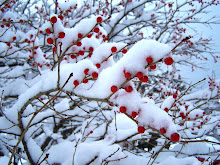Can you think of a place along Vermont's town of Georgias' shore where it’s forested and there are no cottages in sight? A place seemingly unspoiled by development where waterfalls lead to the shore of Lake Champlain . Somewhere you can stand in the shadows of tall trees while wetting your fishing line. I can, quite simply Mill River Falls is a natural paradise.
In the hundreds of times I’ve driven by it, I never really thought that much about the place. It was just always this bridge over the road that a bunch of people parked around. Occasionally I’d see a fishermen scoot across the road with a pole and bucket. It’s a relatively small area that contains a lake floodplain ecosystem, old river oxbows, mature trees, and about 1800 feet of shoreline. The Lake Champlain Land Trust press packet quotes Rod Vallee of Georgia as saying that “ Mill River Falls is one of the most important natural areas left in Georgia .”
Thanks to the diligent work of the LCLT and Georgia Conservation Commission the public will always be able to access this site. Future generations will forever be able to access this property as it is one of Vermont ’s newest additions to the list of state lands. “We had discussions with Anna Neville about conserving her property stretching back seven years before she generously donated her land to us in 2003,” states Chris Boget, assistant director of LCLT. He continues, “We retained a conservation easement and donated the land to the State of Vermont Agency of Natural Resources.” The Department of Forests, Parks, and Recreation website lists the 35 acre parcel as Mill River Falls State Forest .
The area provides more than permanent recreational opportunities for paddlers, hikers, fishermen, and hunters on Lake Champlain . It is habitat for many different creatures at different times of the year. Mill River is one of only a few places where Steelhead, or lake dwelling Rainbow Trout, are known to spawn. Four rare plant and three rare fish species call the Mill River Falls home. Large dead snags provide nest sites for wood ducks and mergansers. The marshes in spring are productive fish spawning and feeding areas. Mill River Falls is abundant with wildlife habitat.
When I first visited the place, two fathers had spread their kids out on the banks with fishing poles. Rock Bass and Pumpkinseed were biting today, the crappie action hot the day before. I rounded a corner in the trail to see fresh deer tracks, and was overwhelmed by the bird calls in the canopy above. It seems the place has enough to please everyone, except for parking.
Right now everyone has to pull off on Mill River Road or next to the bridge. The LCLT website says that a sign and better parking are in the works. Access is a bit hidden, one has to walk a bit down the Pines Road a couple yards to access the trailhead on the right. What a splendid place for a short stroll it makes. Apparently the only question remaining with the property is what to call it.
The LCLT lists it as a natural area on it’s website. Vermont Agency of Natural Resources Forest, Parks, and Recreation lists it on their website as a state forest. I figured I’d ask whether it will be a state forest, park, or natural area. The folks at FPR told me to get in touch with their forester, the people at LCLT referred me to the same person. So I got in touch with Gary Sawyer the State Lands Stewardship Forester who said, “I don’t know what designation the Mill River Falls parcel will receive.” With natural beauty abound, Mill River Falls will forever remain publicly accessible, whether it be state forest, park, or natural area.
Thursday, October 25, 2007
Mill River Falls State Something
Subscribe to:
Post Comments (Atom)




No comments:
Post a Comment